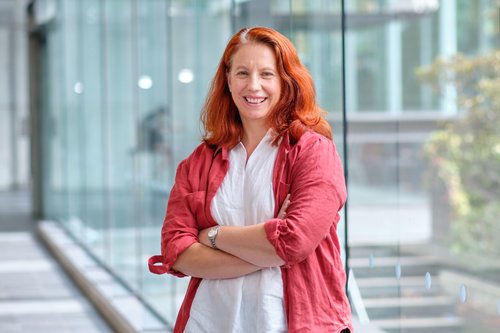7 Dec 2021
As this chapter of her life closes, our Engineering New Zealand President, Rosalind Archer, reflects on her years at Auckland University and how teaching has changed during this time.
I've given my last lecture at the University of Auckland, marked my last set of assignments, and awarded my last set of grades. I won't be giving up lecturing completely... but I will be taking a break from the lecture theatre as I transition into my new role at Griffith University.
As this chapter closes, I’ve taken time to reflect and asked myself – how has teaching changed?
I went back into my archives and found the material for my first lecture at the University of Auckland when I arrived back in New Zealand in 2002. Winding the clock back to then, the role of a lecture to transmit content was far more important than it is now.
My presentations were accompanied by nicely type-set notes (pages of LaTeX for those of you who appreciate mathematical typesetting). Lecture theatre recording systems didn’t exist – so if you wanted to see/hear the lecture, you had to be in the theatre.
I was always keen to put things in context and would try to arrive with relevant physical props or code-based demos. Video content such as YouTube (which didn’t exist until 2005) were much harder to source, though some textbooks did offer CDs and websites with supporting material.
Some students would buy textbooks or access them at the library. I used to buy inexpensive copies of my favourite books on eBay in the US and bring them back into New Zealand to help out in that regard.
Internet access at home was the exception, not the norm – and it was the glorious "dial-up".

Fast forward to 2019, pre-pandemic life! Web-based learning management systems and lecture theatre recording tools had been the norm for some time.
Interactive platforms, such as Piazza, provided scope for engagement to continue beyond pre/post-lecture "corridor conversations" or office hours (with the challenges that come with those platforms being active 24/7).
Lecture theatre attendance was still generally high. The array of resources students have access to is vast. In many ways, the lecturer role has changed substantially into much more of a "guide on the side" than a "sage on a stage".
When I think about my lecture content in recent years, my material is now much more likely to embrace the "big picture", challenging students to acknowledge both the social and economic context engineering has, without sacrificing core technical expertise.
Then there was 2020/2021! Our semester starts in late February/early March each year, so we moved online in 2020 after students had only been on campus for a matter of weeks.
Our move to "emergency" online teaching was facilitated by a huge number of staff. IT staff made miracles happen, and lab technicians filmed demos or shipped experimental kits out to students' homes.
The disruption of the pandemic has made staff think hard about:
- what drives student engagement (and learning analytics to measure engagement)
- synchronous versus asynchronous engagement
- the importance of learning design
- the role of learning communities i.e. learning is a social activity
- assessment (open book exams)
- (and more!)
Two decades ago I would definitely never imagined my "last lecture" was a matter of pressing "upload" on a set of video files being placed on a learning management system. I would not have foreseen that I would be designing web-based exercises in H5P to make the session interactive.
But the journey staff have been on is not all about learning design and technology. It's about humanity. I know students appreciated me sharing a bit about the "bubble" I worked from during lockdown. ( See my less than Instagram worthy home office during the first lockdown).

I don't know what 2030 will look like on campuses around the world, but I’m excited to find out.



